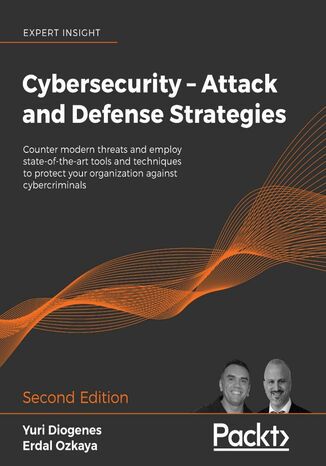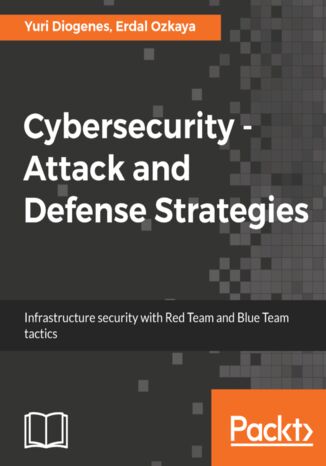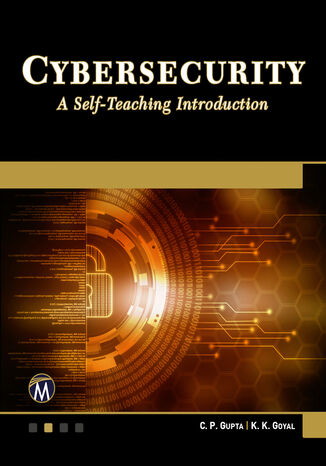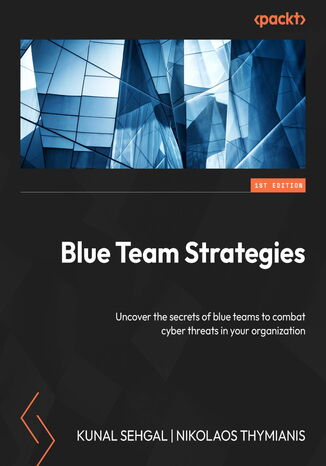Kategorien
E-Books
-
Wirtschaft
- Bitcoin
- Geschäftsfrau
- Coaching
- Controlling
- E-Business
- Ökonomie
- Finanzen
- Börse und Investitionen
- Persönliche Kompetenzen
- Computer im Büro
- Kommunikation und Verhandlungen
- Kleines Unternehmen
- Marketing
- Motivation
- Multimedia-Training
- Immobilien
- Überzeugung und NLP
- Steuern
- Sozialpolitik
- Handbȕcher
- Präsentationen
- Führung
- Public Relation
- Berichte, Analysen
- Geheimnis
- Social Media
- Verkauf
- Start-up
- Ihre Karriere
- Management
- Projektmanagement
- Personal (HR)
-
Für Kinder
-
Für Jugendliche
-
Bildung
-
Enzyklopädien, Wörterbücher
-
E-Presse
- Architektura i wnętrza
- Sicherheit und Gesundheit am Arbeitsplatz
- Biznes i Ekonomia
- Haus und Garten
- E-Business
- Ekonomia i finanse
- Esoterik
- Finanzen
- Persönliche Finanzen
- Unternehmen
- Fotografie
- Informatik
- HR und Gehaltsabrechnung
- Frauen
- Computer, Excel
- Buchhaltung
- Kultur und Literatur
- Wissenschaftlich und akademisch
- Umweltschutz
- meinungsbildend
- Bildung
- Steuern
- Reisen
- Psychologie
- Religion
- Landwirtschaft
- Buch- und Pressemarkt
- Transport und Spedition
- Gesundheit und Schönheit
-
Geschichte
-
Informatik
- Office-Programme
- Datenbank
- Bioinformatik
- IT Branche
- CAD/CAM
- Digital Lifestyle
- DTP
- Elektronik
- Digitale Fotografie
- Computergrafik
- Spiele
- Hacking
- Hardware
- IT w ekonomii
- Wissenschaftliche Pakete
- Schulbücher
- Computergrundlagen
- Programmierung
- Mobile-Programmierung
- Internet-Server
- Computernetzwerke
- Start-up
- Betriebssysteme
- Künstliche Inteligenz
- Technik für Kinder
- Webmaster
-
Andere
-
Fremdsprachen lernen
-
Kultur und Kunst
-
Lektüre
-
Literatur
- Anthologien
- Ballade
- Biografien und Autobiografien
- Für Erwachsene
- Drama
- Tagebücher, Memoiren, Briefe
- Epos
- Essay
- Science Fiction
- Felietonys
- Fiktion
- Humor, Satire
- Andere
- Klassisch
- Krimi
- Sachbücher
- Belletristik
- Mity i legendy
- Nobelpreisträger
- Kurzgeschichten
- Gesellschaftlich
- Okultyzm i magia
- Erzählung
- Erinnerungen
- Reisen
- Gedicht
- Poesie
- Politik
- Populärwissenschaftlich
- Roman
- Historischer Roman
- Prosa
- Abenteuer
- Journalismus
- Reportage
- Romans i literatura obyczajowa
- Sensation
- Thriller, Horror
- Interviews und Erinnerungen
-
Naturwissenschaften
-
Sozialwissenschaften
-
Schulbücher
-
Populärwissenschaft und akademisch
- Archäologie
- Bibliotekoznawstwo
- Filmwissenschaft
- Philologie
- Polnische Philologie
- Philosophie
- Finanse i bankowość
- Erdkunde
- Wirtschaft
- Handel. Weltwirtschaft
- Geschichte und Archäologie
- Kunst- und Architekturgeschichte
- Kulturwissenschaft
- Linguistik
- Literaturwissenschaft
- Logistik
- Mathematik
- Medizin
- Geisteswissenschaften
- Pädagogik
- Lehrmittel
- Populärwissenschaftlich
- Andere
- Psychologie
- Soziologie
- Theatrologie
- Teologie
- Theorien und Wirtschaftswissenschaften
- Transport i spedycja
- Sportunterricht
- Zarządzanie i marketing
-
Handbȕcher
-
Spielanleitungen
-
Professioneller und fachkundige Leitfaden
-
Jura
- Sicherheit und Gesundheit am Arbeitsplatz
- Geschichte
- Verkehrsregeln. Führerschein
- Rechtswissenschaften
- Gesundheitswesen
- Allgemeines. Wissenskompendium
- akademische Bücher
- Andere
- Bau- und Wohnungsrecht
- Zivilrecht
- Finanzrecht
- Wirtschaftsrecht
- Wirtschafts- und Handelsrecht
- Strafrecht
- Strafrecht. Kriminelle Taten. Kriminologie
- Internationales Recht
- Internationales und ausländisches Recht
- Gesundheitsschutzgesetz
- Bildungsrecht
- Steuerrecht
- Arbeits- und Sozialversicherungsrecht
- Öffentliches, Verfassungs- und Verwaltungsrecht
- Familien- und Vormundschaftsrecht
- Agrarrecht
- Sozialrecht, Arbeitsrecht
- EU-Recht
- Industrie
- Agrar- und Umweltschutz
- Wörterbücher und Enzyklopädien
- Öffentliche Auftragsvergabe
- Management
-
Führer und Reisen
- Afrika
- Alben
- Südamerika
- Mittel- und Nordamerika
- Australien, Neuseeland, Ozeanien
- Österreich
- Asien
- Balkan
- Naher Osten
- Bulgarien
- China
- Kroatien
- Tschechische Republik
- Dänemark
- Ägypten
- Estland
- Europa
- Frankreich
- Berge
- Griechenland
- Spanien
- Niederlande
- Island
- Litauen
- Lettland
- Mapy, Plany miast, Atlasy
- Miniführer
- Deutschland
- Norwegen
- Aktive Reisen
- Polen
- Portugal
- Andere
- Przewodniki po hotelach i restauracjach
- Russland
- Rumänien
- Slowakei
- Slowenien
- Schweiz
- Schweden
- Welt
- Türkei
- Ukraine
- Ungarn
- Großbritannien
- Italien
-
Psychologie
- Lebensphilosophien
- Kompetencje psychospołeczne
- zwischenmenschliche Kommunikation
- Mindfulness
- Allgemeines
- Überzeugung und NLP
- Akademische Psychologie
- Psychologie von Seele und Geist
- Arbeitspsychologie
- Relacje i związki
- Elternschafts- und Kinderpsychologie
- Problemlösung
- Intellektuelle Entwicklung
- Geheimnis
- Sexualität
- Verführung
- Aussehen ind Image
- Lebensphilosophien
-
Religion
-
Sport, Fitness, Diäten
-
Technik und Mechanik
Hörbücher
-
Wirtschaft
- Bitcoin
- Geschäftsfrau
- Coaching
- Controlling
- E-Business
- Ökonomie
- Finanzen
- Börse und Investitionen
- Persönliche Kompetenzen
- Kommunikation und Verhandlungen
- Kleines Unternehmen
- Marketing
- Motivation
- Immobilien
- Überzeugung und NLP
- Steuern
- Sozialpolitik
- Handbȕcher
- Präsentationen
- Führung
- Public Relation
- Geheimnis
- Social Media
- Verkauf
- Start-up
- Ihre Karriere
- Management
- Projektmanagement
- Personal (HR)
-
Für Kinder
-
Für Jugendliche
-
Bildung
-
Enzyklopädien, Wörterbücher
-
E-Presse
-
Geschichte
-
Informatik
-
Andere
-
Fremdsprachen lernen
-
Kultur und Kunst
-
Lektüre
-
Literatur
- Anthologien
- Ballade
- Biografien und Autobiografien
- Für Erwachsene
- Drama
- Tagebücher, Memoiren, Briefe
- Epos
- Essay
- Science Fiction
- Felietonys
- Fiktion
- Humor, Satire
- Andere
- Klassisch
- Krimi
- Sachbücher
- Belletristik
- Mity i legendy
- Nobelpreisträger
- Kurzgeschichten
- Gesellschaftlich
- Okultyzm i magia
- Erzählung
- Erinnerungen
- Reisen
- Poesie
- Politik
- Populärwissenschaftlich
- Roman
- Historischer Roman
- Prosa
- Abenteuer
- Journalismus
- Reportage
- Romans i literatura obyczajowa
- Sensation
- Thriller, Horror
- Interviews und Erinnerungen
-
Naturwissenschaften
-
Sozialwissenschaften
-
Populärwissenschaft und akademisch
- Archäologie
- Philosophie
- Wirtschaft
- Handel. Weltwirtschaft
- Geschichte und Archäologie
- Kunst- und Architekturgeschichte
- Kulturwissenschaft
- Literaturwissenschaft
- Mathematik
- Medizin
- Geisteswissenschaften
- Pädagogik
- Lehrmittel
- Populärwissenschaftlich
- Andere
- Psychologie
- Soziologie
- Teologie
- Zarządzanie i marketing
-
Handbȕcher
-
Professioneller und fachkundige Leitfaden
-
Jura
-
Führer und Reisen
-
Psychologie
- Lebensphilosophien
- zwischenmenschliche Kommunikation
- Mindfulness
- Allgemeines
- Überzeugung und NLP
- Akademische Psychologie
- Psychologie von Seele und Geist
- Arbeitspsychologie
- Relacje i związki
- Elternschafts- und Kinderpsychologie
- Problemlösung
- Intellektuelle Entwicklung
- Geheimnis
- Sexualität
- Verführung
- Aussehen ind Image
- Lebensphilosophien
-
Religion
-
Sport, Fitness, Diäten
-
Technik und Mechanik
Videokurse
-
Datenbank
-
Big Data
-
Biznes, ekonomia i marketing
-
Cybersicherheit
-
Data Science
-
DevOps
-
Für Kinder
-
Elektronik
-
Grafik / Video / CAX
-
Spiele
-
Microsoft Office
-
Entwicklungstools
-
Programmierung
-
Persönliche Entwicklung
-
Computernetzwerke
-
Betriebssysteme
-
Softwaretest
-
Mobile Geräte
-
UX/UI
-
Web development
-
Management
Podcasts
- E-Books
- Informatik
- Hacking
Hacking
Möchten Sie tiefer in die Welt der Cybersicherheit und moderner Technologien eintauchen? Dann werden Sie sicherlich an unserer Online-Bibliothek interessiert sein. Hier finden Sie Bücher, die Ihnen helfen, die von Hackern verwendeten Methoden kennenzulernen. Sie erfahren auch, wie Sie Ihre Daten effektiv schützen sowie Programme testen und debuggen können.
Cyberprzestrzeń jako nowy wymiar rywalizacji i współpracy państw
Prezentowana praca stanowi próbę omówienia skuteczności środków teleinformatycznych jako instrumentów polityki zagranicznej państw. W przeprowadzonej analizie, biorącej pod uwagę zarówno aspekty rywalizacji, jak i współpracy rządów w cyberprzestrzeni, wykorzystano elementy teorii polityki zagranicznej. W rozprawie omówiono przede wszystkim istotę i etapy rewolucji cyfrowej, która doprowadziła do wykształcenia się przestrzeni teleinformatycznej. Następnie scharakteryzowano jej najważniejsze cechy, zarówno w ujęciu technicznym, jak i politologicznym. Na tej podstawie, podjęto próbę stworzenia uproszczonej typologii zagrożeń teleinformatycznych dla bezpieczeństwa państw, obejmującej takie zjawiska jak haking, haktywizm czy cyberterroryzm. Wreszcie, dokonano analizy najbardziej doniosłych przykładów rywalizacji i współpracy państw w cyberprzestrzeni. Z jednej strony, omówiono m.in. wydarzenia w Estonii w kwietniu i maju 2007 roku, w Gruzji w sierpniu 2008 roku czy w Iranie od 2010 roku (Stuxnet). Z drugiej strony, scharakteryzowano także przejawy kooperacji państw w tej dziedzinie, na przykładzie m.in. Organizacji Narodów Zjednoczonych, Unii Europejskiej, NATO czy Unii Afrykańskiej. Praca ta jest skierowana przede wszystkim do przedstawicieli nauk o polityce i nauk o bezpieczeństwie, decydentów polityki zagranicznej, przedstawicieli służb odpowiedzialnych za bezpieczeństwo teleinformatyczne RP, dziennikarzy, a także studentów politologii, bezpieczeństwa narodowego, stosunków międzynarodowych bądź kierunków pokrewnych. Artykuł o książce ukazał się w czasopiśmie „Gazeta Uniwersytecka UŚ” nr 2 (232) listopad 2015. Recenzja książki ukazała się: na stronach czasopisma internetowego „Sprawy Nauki” nr 1 (206) styczeń 2016, w czasopiśmie „Nowe Książki” 6/2016, s. 74–75 (Michał Baranowski: Cyfrowa wojna i pokój).
Yuri Diogenes, Dr. Erdal Ozkaya
Cybersecurity – Attack and Defense Strategies, Second Edition is a completely revised new edition of the bestselling book, covering the very latest security threats and defense mechanisms including a detailed overview of Cloud Security Posture Management (CSPM) and an assessment of the current threat landscape, with additional focus on new IoT threats and cryptomining.Cybersecurity starts with the basics that organizations need to know to maintain a secure posture against outside threat and design a robust cybersecurity program. It takes you into the mindset of a Threat Actor to help you better understand the motivation and the steps of performing an actual attack – the Cybersecurity kill chain. You will gain hands-on experience in implementing cybersecurity using new techniques in reconnaissance and chasing a user’s identity that will enable you to discover how a system is compromised, and identify and then exploit the vulnerabilities in your own system.This book also focuses on defense strategies to enhance the security of a system. You will also discover in-depth tools, including Azure Sentinel, to ensure there are security controls in each network layer, and how to carry out the recovery process of a compromised system.
Yuri Diogenes, Dr. Erdal Ozkaya
Cybersecurity – Attack and Defense Strategies, Third Edition will bring you up to speed with the key aspects of threat assessment and security hygiene, the current threat landscape and its challenges, and how to maintain a strong security posture.In this carefully revised new edition, you will learn about the Zero Trust approach and the initial Incident Response process. You will gradually become familiar with Red Team tactics, where you will learn basic syntax for commonly used tools to perform the necessary operations. You will also learn how to apply newer Red Team techniques with powerful tools. Simultaneously, Blue Team tactics are introduced to help you defend your system from complex cyber-attacks. This book provides a clear, in-depth understanding of attack/defense methods as well as patterns to recognize irregular behavior within your organization. Finally, you will learn how to analyze your network and address malware, while becoming familiar with mitigation and threat detection techniques.By the end of this cybersecurity book, you will have discovered the latest tools to enhance the security of your system, learned about the security controls you need, and understood how to carry out each step of the incident response process.
Yuri Diogenes, Dr. Erdal Ozkaya
The book will start talking about the security posture before moving to Red Team tactics, where you will learn the basic syntax for the Windows and Linux tools that are commonly used to perform the necessary operations. You will also gain hands-on experience of using new Red Team techniques with powerful tools such as python and PowerShell, which will enable you to discover vulnerabilities in your system and how to exploit them. Moving on, you will learn how a system is usually compromised by adversaries, and how they hack user's identity, and the various tools used by the Red Team to find vulnerabilities in a system.In the next section, you will learn about the defense strategies followed by the Blue Team to enhance the overall security of a system. You will also learn about an in-depth strategy to ensure that there are security controls in each network layer, and how you can carry out the recovery process of a compromised system. Finally, you will learn how to create a vulnerability management strategy and the different techniques for manual log analysis.
Cybersecurity. A Self-Teaching Introduction
Mercury Learning and Information, C. P. Gupta, K. K. Goyal
This book provides fundamental concepts of cybersecurity and cybercrime in an easy-to-understand, self-teaching format. It covers data security, threats, viruses, malicious software, firewalls, VPNs, security architecture, design, policies, cyberlaw, and cloud security.The course starts with an introduction to information systems and cybersecurity application security. It progresses to developing secure information systems and understanding information security policies, standards, and cyberlaw. The final chapters address the security of emerging technologies, including cloud security, IoT, and AES.Understanding these concepts is crucial for protecting data and systems against cyber threats. This book transitions readers from basic knowledge to advanced cybersecurity practices, combining theoretical insights with practical applications. It is an invaluable resource for mastering cybersecurity in today's digital age.
Stepping into the role of a Cybersecurity Architect (CSA) is no mean feat; it requires both upskilling and a fundamental shift in how you view cybersecurity. Written by a seasoned cybersecurity expert with over two decades of experience spanning the public and private sectors, this all-encompassing guide outlines an accessible a path for cybersecurity engineers and newcomers to evolve into architects, sharing best practices to enhance your skills.After a brief introduction to the role and foundational concepts, this book will help you understand the day-to-day challenges faced by CSAs, supported by practical examples. You'll gain insights into assessing and improving your organization’s security posture, including system, hardware, and software security. You'll also learn how to set user and system policies and protocols through effective monitoring and enforcement, and understanding countermeasures that protect the system from unauthorized access attempts.To prepare you for the road ahead and augment your existing skills, the book provides invaluable tips and practices that will contribute to your success as a CSA. By the end of this book, you’ll be well-equipped to take up the CSA role and execute robust security solutions.
It's now more important than ever for organizations to be ready to detect and respond to security events and breaches. Preventive measures alone are not enough for dealing with adversaries. A well-rounded prevention, detection, and response program is required. This book will guide you through the stages of building a red team program, including strategies and homefield advantage opportunities to boost security.The book starts by guiding you through establishing, managing, and measuring a red team program, including effective ways for sharing results and findings to raise awareness. Gradually, you'll learn about progressive operations such as cryptocurrency mining, focused privacy testing, targeting telemetry, and even blue team tooling. Later, you'll discover knowledge graphs and how to build them, then become well-versed with basic to advanced techniques related to hunting for credentials, and learn to automate Microsoft Office and browsers to your advantage. Finally, you'll get to grips with protecting assets using decoys, auditing, and alerting with examples for major operating systems.By the end of this book, you'll have learned how to build, manage, and measure a red team program effectively and be well-versed with the fundamental operational techniques required to enhance your existing skills.
Kunal Sehgal, Nikolaos Thymianis
We've reached a point where all organizational data is connected through some network. With advancements and connectivity comes ever-evolving cyber threats - compromising sensitive data and access to vulnerable systems. Cybersecurity Blue Team Strategies is a comprehensive guide that will help you extend your cybersecurity knowledge and teach you to implement blue teams in your organization from scratch.Through the course of this book, you’ll learn defensive cybersecurity measures while thinking from an attacker's perspective. With this book, you'll be able to test and assess the effectiveness of your organization’s cybersecurity posture. No matter the medium your organization has chosen- cloud, on-premises, or hybrid, this book will provide an in-depth understanding of how cyber attackers can penetrate your systems and gain access to sensitive information. Beginning with a brief overview of the importance of a blue team, you’ll learn important techniques and best practices a cybersecurity operator or a blue team practitioner should be aware of. By understanding tools, processes, and operations, you’ll be equipped with evolving solutions and strategies to overcome cybersecurity challenges and successfully manage cyber threats to avoid adversaries.By the end of this book, you'll have enough exposure to blue team operations and be able to successfully set up a blue team in your organization.








